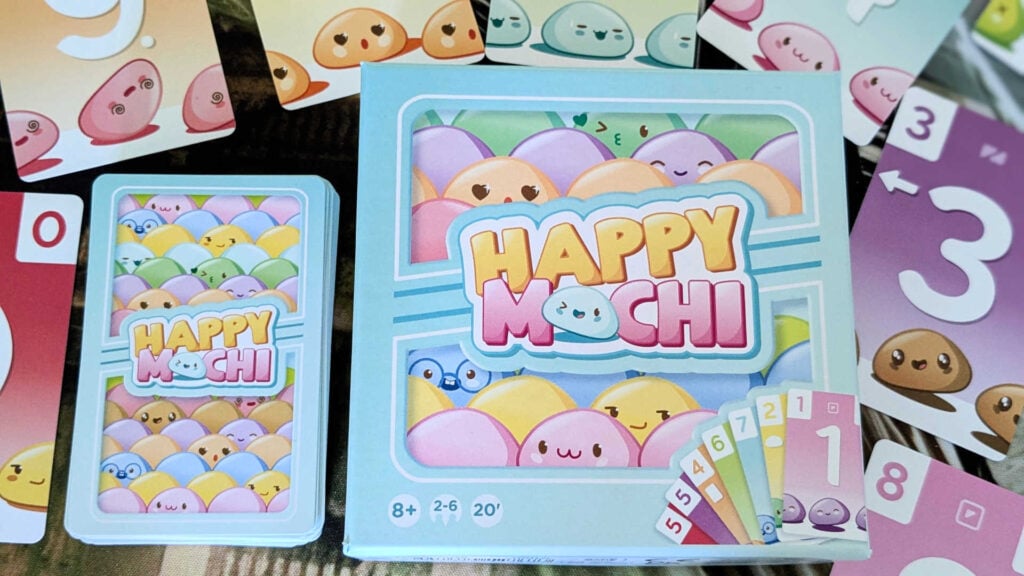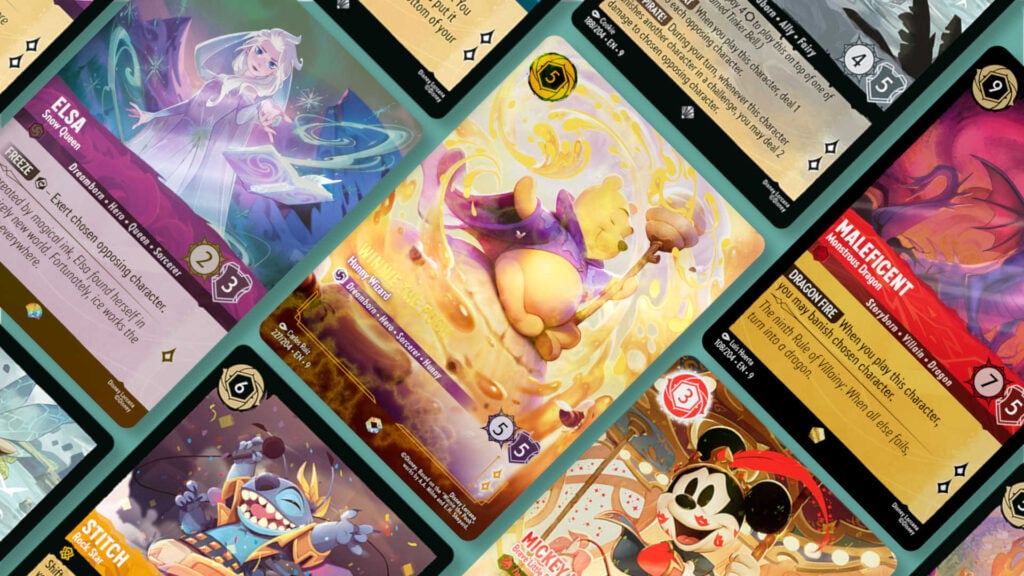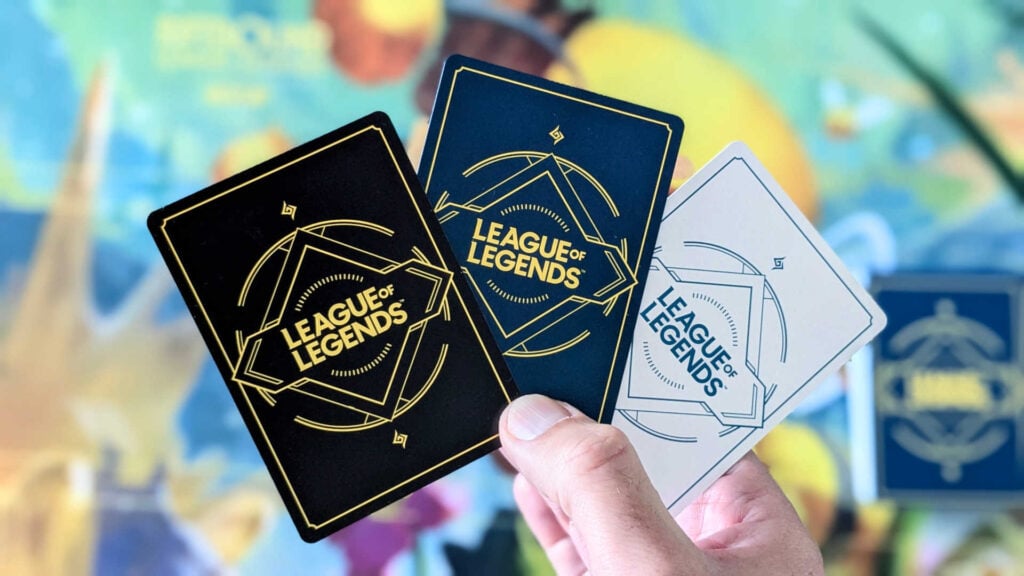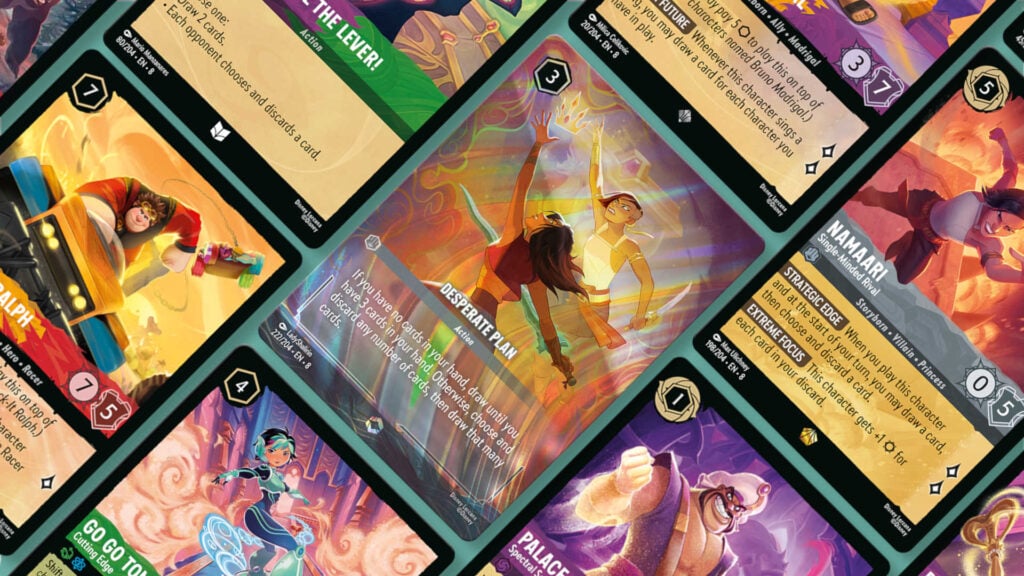Image credit to the author
Video gamers, particularly those of a certain age, are likely to be familiar with the adorable, addictive puzzle game, Puyo Puyo, which has been around in various forms and known by many names (rebranded as Dr. Robotnik’s Mean Bean Machine and Kirby’s Ghost Trap for Sega Genesis and SNES in the West, respectively, among other titles) since 1991. Why, you may ask, is that relevant to the card game, Happy Mochi?
When I saw the lineup of colorful mochi, with their adorable, surprisingly characterful expressions, I was immediately reminded of the cute Puyo Puyo blobs. Especially in the way they’re shown smiling, stacked up and arranged in crowds all over the box and the card backs! It’s there that the similarities between the video game series and the card game ends, however; so let’s check out Happy Mochi, and find out if it’s as fun to play as it looks.
Table of Contents
ToggleGetting Started With Happy Mochi
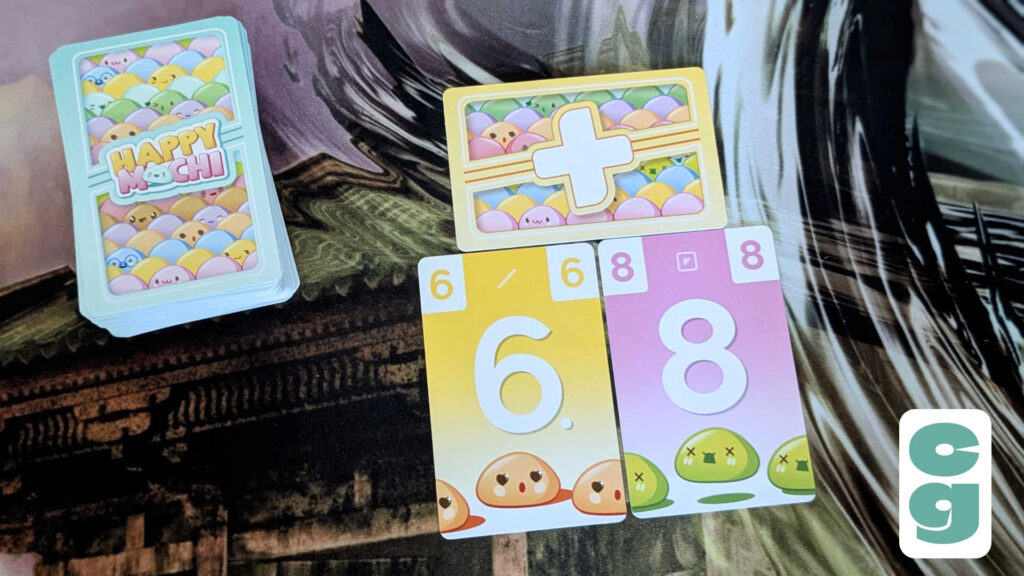
Contained in a compact, pastel colored box that’s covered in those aforementioned, adorable mochi, Happy Mochi is very straightforward to set up. Simply deal seven cards to each player (with the game supporting 2-6 players per game), then place the Value card on its “+” side. Below this, deal two cards from the deck face up next to each other to form the Central Duo (which makes a two digit number; for example, a 6 on the left and 8 on the right is 68, as you can see in the above image), then you’re ready to go.
Before you play, however, there’s one important rule that you must remember: in the style of the iconic bean-harvesting game, Bohnanza, no one is allowed to re-arrange the cards in their hand, at any time.
How to Play Happy Mochi
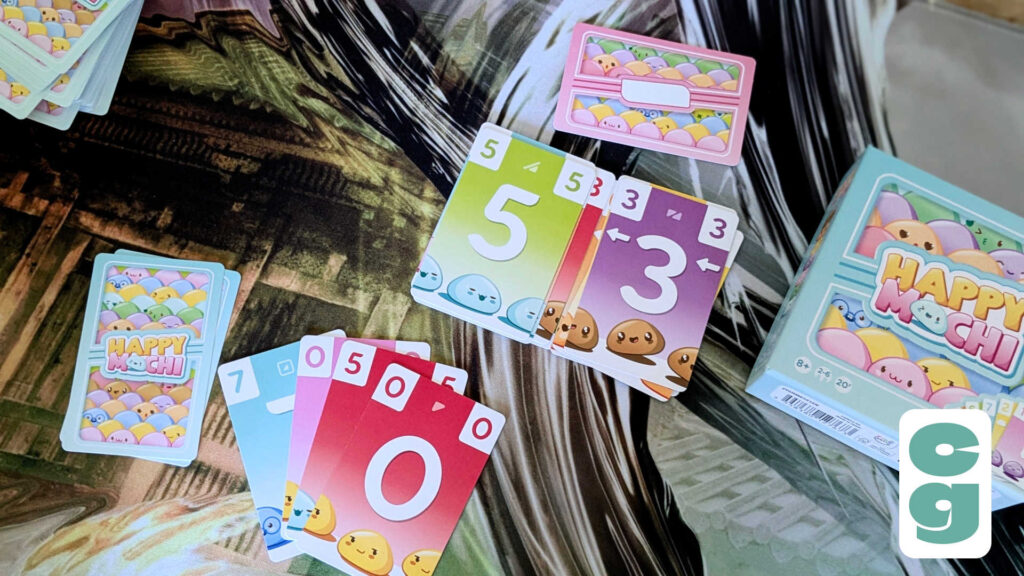
The goal of Happy Mochi is to be the player with the lowest score at the end of the game. Multiple rounds are played; each round continues until someone plays their last card, at which point the other players add up the value of their remaining cards. The game end is triggered when a player reaches, or exceeds, 30 points, and the player with the lowest points total wins.
Each turn, players either draw a card or play a Duo; let’s look at each option in a little more detail.
Drawing a Card
If drawing a card, this can be drawn from the Central Duo in the play area, the top card of the deck, or chosen from a player’s own Reserved cards (more on those later!). The drawn card can be placed anywhere in a player’s hand, which of course cannot be rearranged.
Playing a Duo
If playing a duo, you’ll be taking two cards from your hand and placing them on top of the Central Duo; but this does come with a number of restrictions. Firstly, there’s the rule about not changing the order of your cards: any cards played from your hand must be adjacent, without changing their position. Then, there’s a value restriction; if the Value card is on its “+” side, your two cards must form a higher number than the Central Duo’s current value. If the Value card is “-“, it won’t surprise you to learn that your played duo must be lower than the currently shown Central Duo.
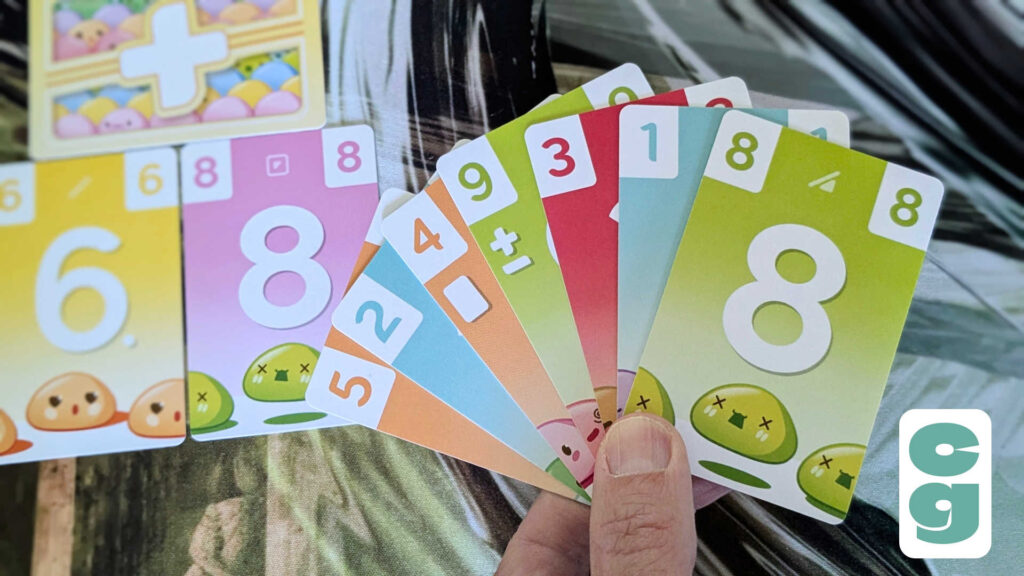
For example, in the above image, the Central Duo is a 6 and an 8, with the Value card showing “+”. In the hand shown, the only viable pair of cards that can be played is the 9 and 3; this fulfils the value restriction, and also adheres to the rule of not rearranging the cards!
There’s also a color restriction which applies if both cards in the Central Duo have matching colors. Though you don’t need to match that particular color, the two cards you play must be the same color. The value restriction still applies along with the color restriction.
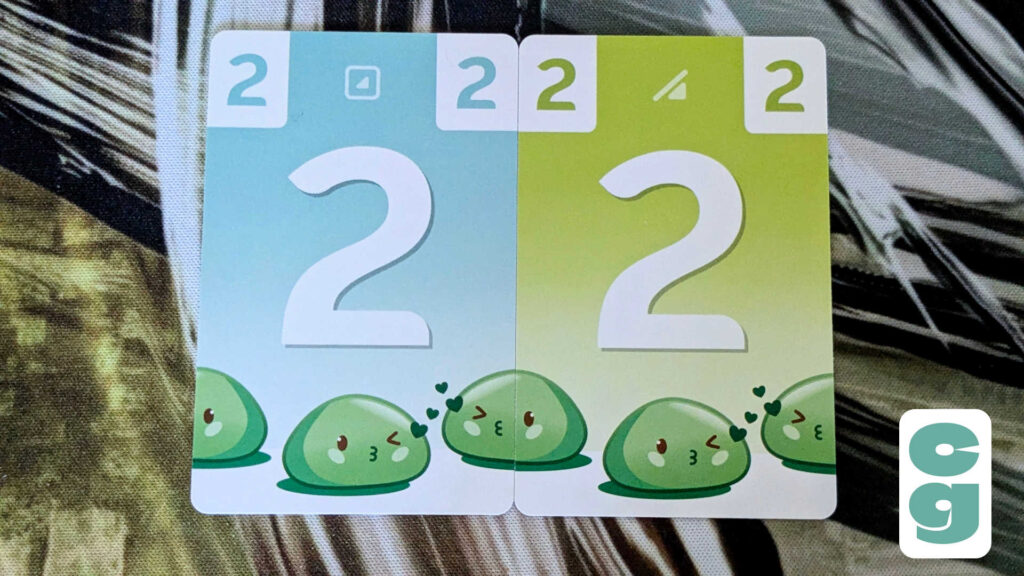
Finally, there’s a way to ignore both the value and color restriction entirely: by playing a duo which have matching numbers, you can ignore the previous restrictions. When doing so, you need to verbally announce it, by saying “Happy Mochi!” as you play your matching numbered duo. The image above shows a pair of 2s; this is a viable play for a “Happy Mochi”.
Card Effects
So that’s playing cards out of the way; note also that many cards also have effects that trigger when cards are played. Two of these are required and must trigger, whereas the other two are optional and the player decides whether or not to trigger them.
Required Effects

The symbol showing the plus and minus (on the 9 card above) requires that players flip the Value card (shown on its “-” side above) over. The card-shaped symbol, which you can see on the 4 card, requires players to either draw a card themselves, or choose another player who must draw a card. This follows the same rules as drawing a card as an action.
Optional Effects

The left-pointing arrow, seen on the 6 card above, means that all players simultaneously give one card from their hand to the player on their left. The player who played the card bearing this symbol decides whether or not to trigger the effect, and the given card may be placed anywhere within the receiving player’s hand. The mochi symbol, shown on the 2 card, allows the active player to remove a card from hand and place it face down in front of them as a Reserved card; it’s from here that cards can also be drawn during a future turn. Reserved cards also remain in place, face down (though the owner can look at them at any time) between rounds, so they form a sort of personal deck for the player who owns them, over the full course of the game.
Is Happy Mochi Fun to Play?
There’s some really unusual mechanics in Happy Mochi, and though we may have seen similar elements in other games, Happy Mochi still manages to feel quite fresh. It’s very satisfying to see a plan come together, and it rewards patience, though saying that, it’s a game which plays quickly regardless of the player count, given that turns consist of a choice of two actions (though of course, card effects can add to that).
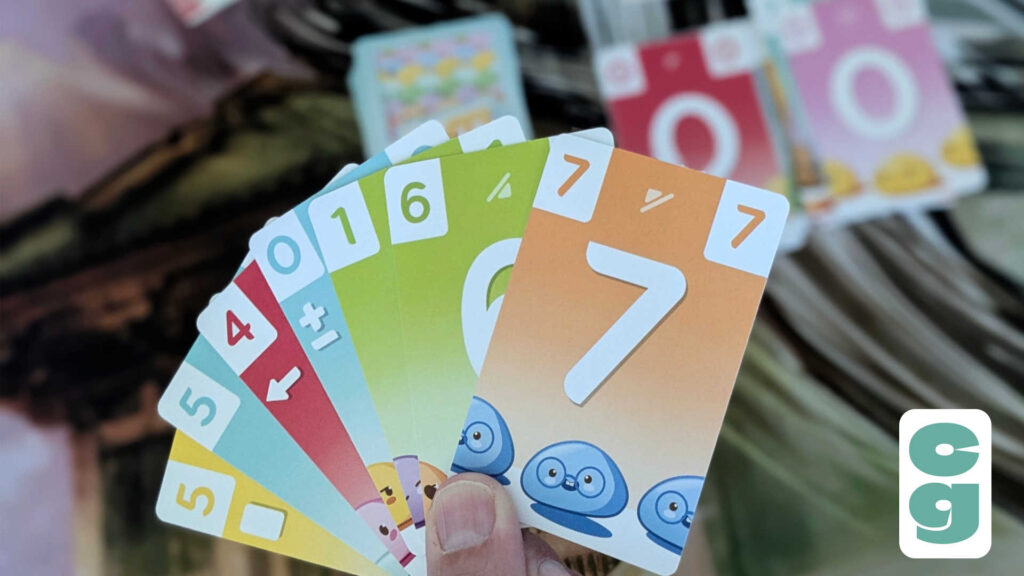
It’s a bit chaotic at higher player counts, however, which can impact any planning that players do; by the time your turn comes around, it’s very likely that the Central Duo’s numbers and colors, not to mention the Value card, has changed so significantly that your strategy is no longer viable.
So we recommend sticking to lower player counts to have the most enjoyment with Happy Mochi, with 2-3 players being the sweet spot. It’s an adorable game from an aesthetic point of view, and it can be fun, but the chaos that can ensue with more players can make it a somewhat frustrating experience.
The Card Gamer Verdict
A beautifully designed game from an aesthetic point of view, Happy Mochi is also an easy game to learn and teach. Though you need to remember that cards cannot be rearranged, it’s really not difficult to pick up and play Happy Mochi within minutes.
However, it’s lacking in a couple of areas. For example, there are no player aid cards, which would have been very useful given the difference between optional and required card effects; even though there’s a summary in the rules, it does feel as if this should have been included on a few extra cards in the box. The same is true of keeping track of scores in Happy Mochi; it feels like there should have been a way to track this using in-game components, but none are included.
Overall, however, Happy Mochi is a fun little game, with some unusual, well implemented mechanics. It’s a little too unpredictable at higher player counts, but if you’re playing with 2 or 3 players, it’s a very enjoyable, fast paced experience.
Want to check out other small box, standalone games? Take a look at our review of River Rats, and our verdict on two player deduction game, Classified Information.


